Stream Health
Monitoring the health of our streams
Healthy streams and rivers are important because they provide clean water for drinking, agricultural irrigation, industrial use, and recreational enjoyment. Municipal wastewater facilities also rely on clean rivers to dilute and carry away our waste.
By measuring stream health, NVCA can document changes due to broad impacts like climate change and urban development or smaller impacts like backyard ponds and fencing cattle out of a stream. We measure stream health through benthic macroinvertebrates, stream temperature, water chemistry and fish.
Benthic Macroinvertebrates
Benthic macroinvertebrates (BMI) are small animals that can be seen with the naked eye and have no backbone. These animals include worms, snails, mussels, leeches, crayfish as well as the immature life stages of insects that live among the stones, logs, sediments and aquatic plants on the bottom of streams, rivers and lakes. BMI can live in streams for up to three years. During this time, they are exposed to the full range of water quality conditions in the stream. By monitoring them, NVCA can evaluate stream health over time. Some species require excellent water quality to survive while others are quite tolerant of pollution. By looking at the different species at a site, we can identify whether stream health has been good, fair or poor over their lifespan. Since BMI are at the bottom of the food chain, their community responds quickly to changes in stream health conditions.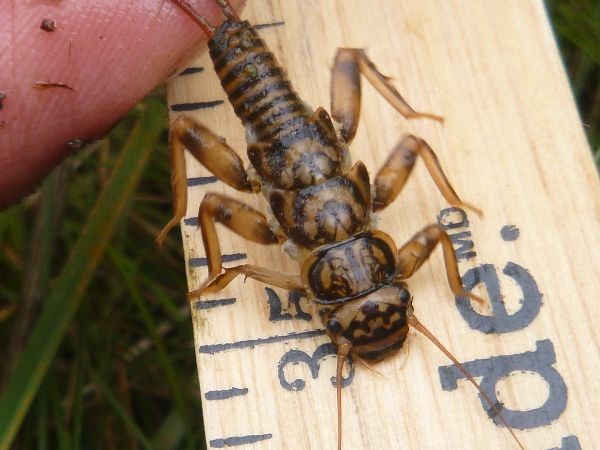
Golden or Common stoneflies
Scientific name: Perlidae
Very sensitive to their living conditions.
Have been found in the south branch of the Nottawasaga River near Highway 10 in Mono.
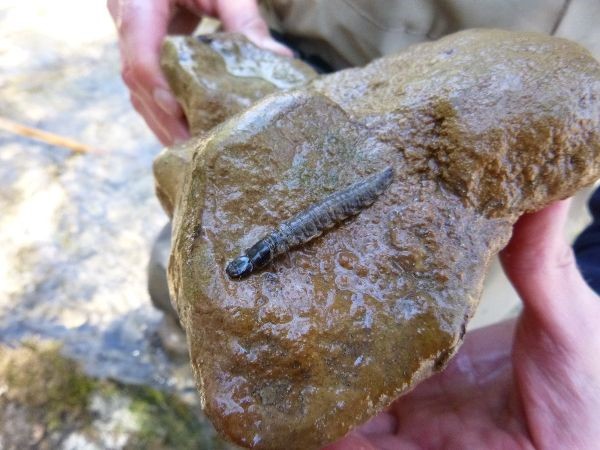
Dobsonflies
Scientific name: Corydalidae
Very sensitive to their living conditions.
Have been found in Pine River near Terra Nova in Mulmur
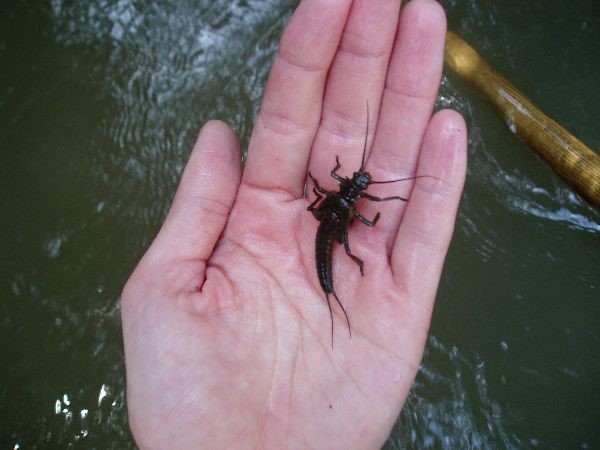
Giant stoneflies
Scientific name: Pteronaryidae
Super sensitive to their living conditions.
Have been found in Matheson Creek near Horseshoe Valley Road in Springwater
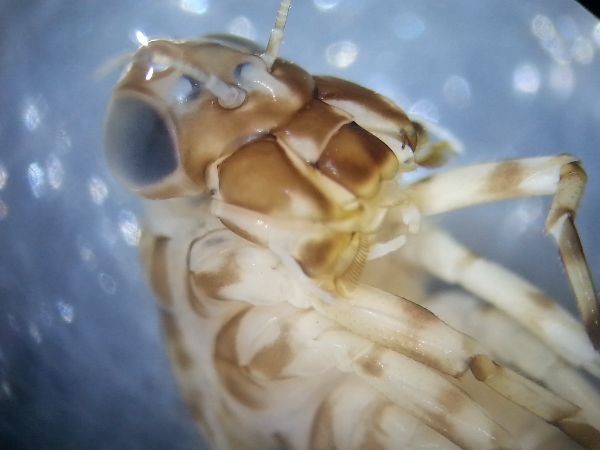
Combmouthed minnow mayflies
Scientific name: Ameletidae
Super sensitive to their living conditions
Can be found in Noisy River near Dunedin in Clearview
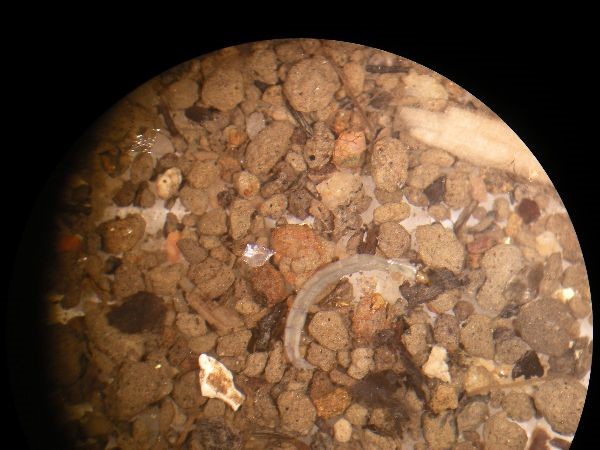
Midges larva
Scientific name: Chironomidae
Quite tolerant
Have been found throughout the watershed
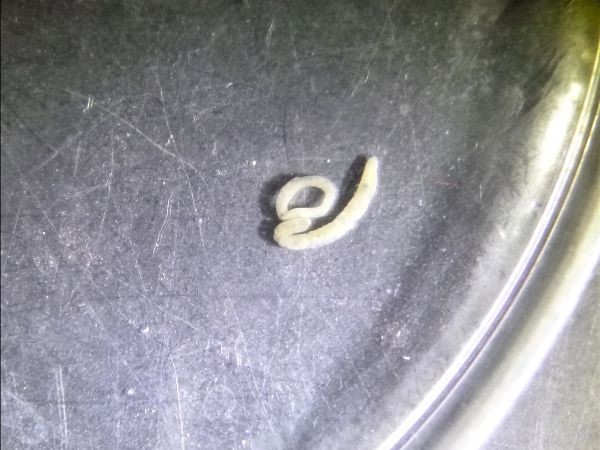
Aquatic Worm
Scientific name: Tubificidae
Quite tolerant
Have been found throughout the watershed
To collect these organisms, NVCA uses standard methods developed by the Ontario Benthos Biomonitoring Network. Watershed science staff stir up the bottom of a river and use a dip net to collect what gets dislodged. Any BMI that are caught are preserved and brought back to our lab for sorting, identification, and analysis.
Generally, we find that
- Healthy streams (e.g. Black Bank Creek or Ley’s Burn) are associated with areas of minimal human disruption and have a high percentage of natural (forest and wetland) cover within their watersheds and wide natural riparian buffers.
- Unhealthy streams (e.g. Innisfil Creek) are often associated with greater human disruption including intensive agricultural, urban land uses, or used as municipal drains. Streams that are not shaded, or have had neighbouring forests and wetlands removed are usually unhealthy.
- Ponds constructed within stream systems can have dramatic negative impacts on local stream health.
For detailed information visit the Watershed Health Checks.
Stream Temperature
NVCA measures the temperature of the rivers in the watershed to gauge human impacts on this important physical feature of water. Temperature regulates chemical reactions, biological metabolic processes and defines the suitability of habitat for sensitive aquatic species. By maintaining long-term stations NVCA can measure the impacts of climate change, the loss of natural vegetation, and land use changes. Generally, we find that:- The rivers in the watershed are warming.
- There is less coldwater habitat available to sensitive fish compared to 60 years ago.
- Ponds that are connected to rivers (backyard, stormwater, or reservoirs) have a significantly negative impact on stream temperatures.
Water Chemistry
NVCA analyzes the chemical composition of the rivers and streams to provide a snapshot of stream health conditions and to allow us to identify potential causes of poor stream health. As part of a partnership program with Ontario’s Provincial Water Quality Monitoring Network (PWQMN), we sample 18 sites across the watershed up to 10 times each year. This data is shared by the province and the NVCA. Some streams and rivers have been sampled for over 50 years! By maintaining long term chemistry stations, NVCA can evaluate how well the watershed management efforts are working. Through water chemistry monitoring, we can analyze the water temperature, oxygen levels, nutrient and metal concentrations in the rivers. Generally, we find that:- Overall nutrient concentrations in the Nottawasaga River are decreasing from historical levels.
- Despite this, there is a general increasing trend in nutrients and turbidity (cloudiness of the water) along Nottawasaga River from Hockley Valley to Wasaga Beach under low flow conditions.
- Innisfil Creek typically has the highest concentrations of nutrients and highest turbidity within the watershed.
- Storm events result in significantly higher levels of nutrients and turbidity at all stations within the watershed.
- Road salt is becoming a greater issue in the watershed’s rivers.
Fish monitoring
Monitoring the amount and types of fish in our watershed lets the NVCA understand the human impacts on our streams and rivers. Some threats include dam construction, changing water temperatures, overfishing and the introduction of invasive species. At NVCA, the fish monitoring program primarily focuses on areas that have been restored and areas that are important to coldwater fish habitat but are threatened by land use changes.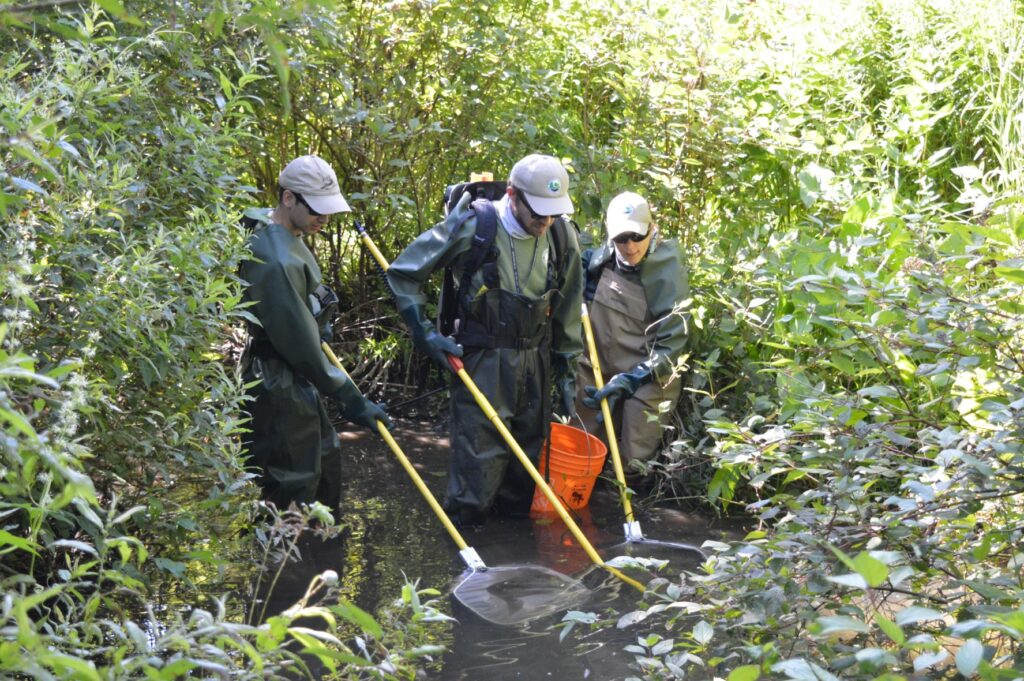
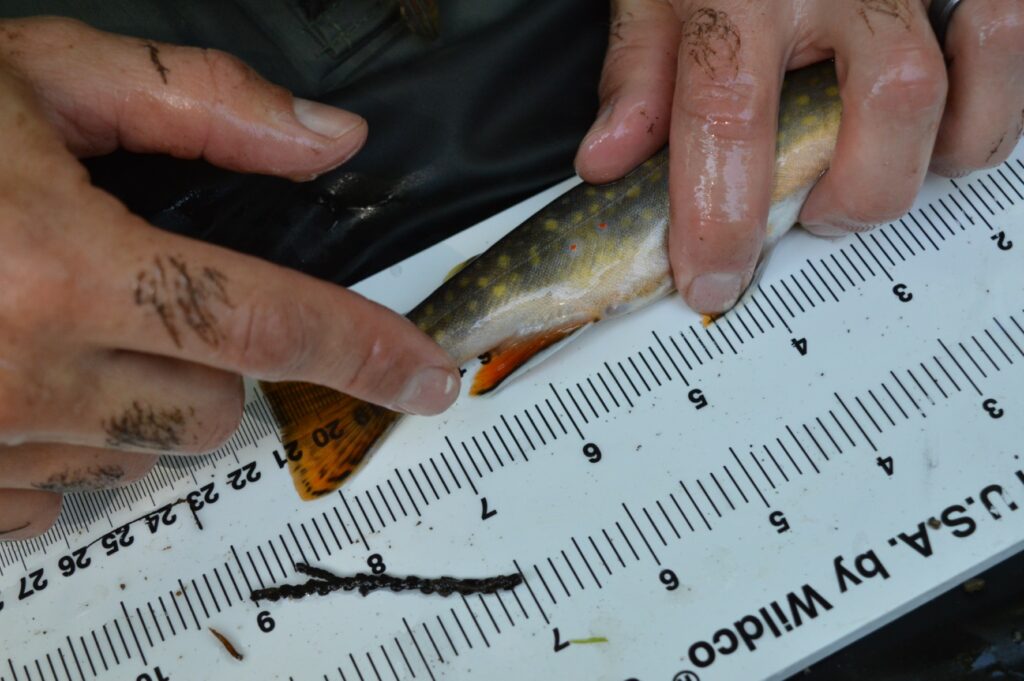
Watershed science staff completes electrofishing to sample fish using provincially standard protocols. It involves placing an electric current into the water to temporarily stun fish within range of the current. Fish of all sizes are collected from the smallest minnows to the largest game fish. Fish are then separated by species, counted, measured, and weighed before being released back into the stream. When done correctly by trained staff, no fish are killed during the sampling process. Depending on the size of the stream other methods may be employed.
NVCA staff are specially trained and licensed by the Ministry of Natural Resources and Forestry for this.
![]() Who to Contact
Who to Contact
![]() Watershed Science Team
Watershed Science Team![]() 705-424-1479 x 234
705-424-1479 x 234![]() iockenden@nvca.on.ca
iockenden@nvca.on.ca